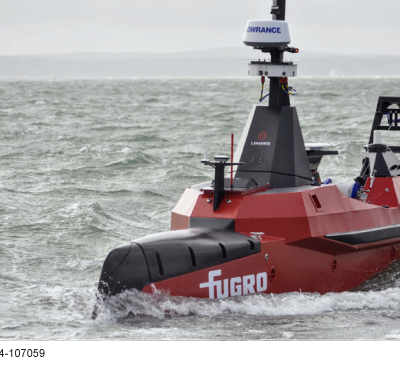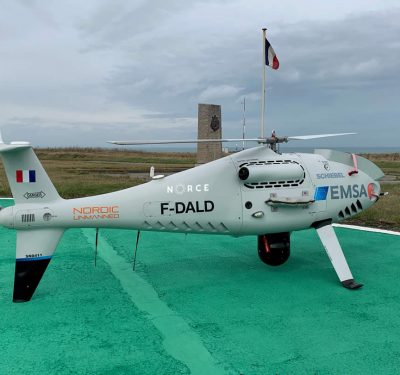
The Wave Glider autonomous vehicle that will harvest data from the RAPID 26°N array.
Scientists from the United Kingdom’s National Oceanography Centre (NOC) are using unmanned technology to help gather and transmit data from instruments anchored as far as 5 kilometers below the ocean’s surface.
The 200+ instruments are part of a network referred to collectively as the RAPID array. Attached to mooring wires anchored on the ocean floor the sensors are collecting data on the Atlantic Meridional Overturning Circulation (AMOC) — a system of ocean currents running from the tropics to northwest Europe that helps keep the climate on the northern end of the system relatively mild. Sometimes described as the “Atlantic conveyor belt,” the amount of heat transferred by these currents is equivalent to 35,000 times the average rate of electricity consumption in the UK or about one million times the output of an average UK nuclear power station, the NOC said in a statement.
The RAPID instruments record temperature and salinity data as well as the flow rate of the currents. Researchers have been traveling to the array by ship every 18 months to collect the data, an expensive and time-consuming effort.
On this trip, however, they will attach a new device to one of the moorings designed to gather the data from all the sensors on the wire and transmit it via sound waves to an autonomous Wave Glider on the surface. The glider will then transmit the data directly to the scientists via satellite.
“This new system will enable us to get data that could in the future improve seasonal weather forecasts for Europe”, says project scientist Darren Rayner from the NOC. “The system has successfully completed a short trial in water 600 meters deep, but an 18-month deployment in water 4,000 meters deep is a much tougher test.”
In addition to improved weather forecasts the quicker retrieval of data could improve researcher’s understanding of climate change and changes in the ocean.
A slow-down of the AMOC from 2009 to 2010, for example, caused sea levels in New York to rise by 13 centimeters, leading to widespread flooding and erosion on a scale similar to a hurricane, the NOC said.






